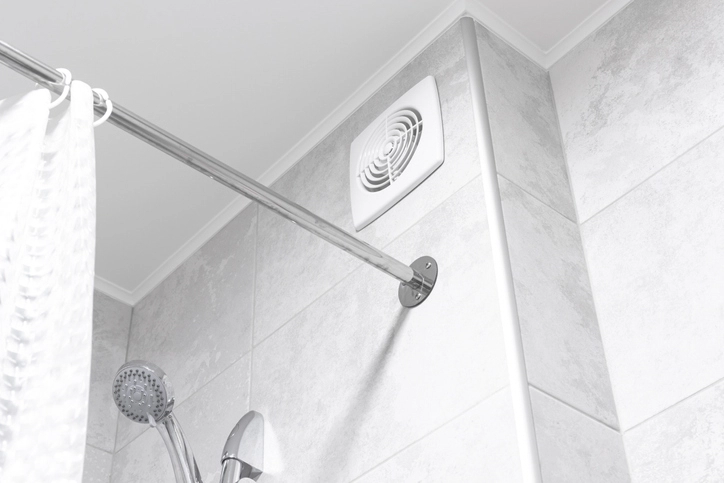Does Your Bathroom Need an Exhaust Fan?

So, you’ve just moved into a new house or apartment to find that there seems to be no ventilation in the bathroom. Is that going to create problems down the line from shower steam, flushing toilets, or running sinks?
Exhaust fans serve many purposes, including:
- Removing odor
- Controlling humidity
- Preventing mold
- Preserving building materials
Paint and wallpaper peel when the air gets too damp, not to mention the potential wood rot and lack of structural integrity. Bathrooms with excessive moisture are at a higher risk of developing mold growth within walls, tubs, and showers. And mold spores that come from the bathroom can spread throughout the home, causing problems with indoor air quality.
Signs that your bathroom needs more ventilation are:
- Stuffiness when you enter the room
- Mildew on walls or tiling
- Stains forming on walls or ceiling
- Smells that linger for a long time
Suffice to say that if you have a bathroom fan that simply isn’t working at the moment, you should schedule repair services sooner rather than later, especially if you’re preparing your plumbing for the warmer months. Beyond the costly problems you might encounter in the future without taking steps for proper ventilation, you’ll also be dealing with inconveniences, such as applying makeup with a sheen of humid sweat, or finding that your hair dryer doesn’t work nearly as well in the bathroom after a shower.
Top Tips for Making the Most of Your Bathroom Fan
If you do have an exhaust fan in the bathroom, you have a resource that’s extremely useful if taken care of. Make the most of your bathroom ventilation by ensuring your exhaust fan:
- Is installed in the best location. Keep it close to tubs and showers, but not too close to AC or heating vents. If the fan is near other vents, they can interfere with the circulation.
- Runs long enough after bathroom use. The fan should run throughout the length of your bath or shower and remain on for 15-20 minutes afterward to continue airing out the room.
- Remains clean throughout the year. Dust builds continuously, so be sure to remove debris from the fan and its housing once or twice per year. To do this, simply turn the electricity to your bathroom off, and remove the fan cover so you can remove any dust or webs before replacing the cover and turning the electricity back on.
- Is the right size for the space. Building regulations call for several full air exchange cycles per hour. You’ll want a bathroom fan that has the same cubic feet-per-minute (CFM) capacity as the square footage of the room.
What to Do If There is No Exhaust Fan in the Bathroom
It’s not uncommon especially for older homes to lack the necessary ventilation that modern-day bathrooms need. There are some simple solutions, like installing a window-mounted fan or a ceiling vent. But if you’re renting or the window is in the shower, you can control ventilation by:
- Opening the bathroom door while you shower or bathe. If you can’t have it open during use for privacy reasons, be sure to open the door once you’re finished.
- Adding a fan. You can use a basic fan to help blow air out the door or window to keep the steam moving.
- Wiping walls and droplets. After you shower, wipe down the shower walls with a squeegee or clean towel.
- Cleaning up any puddles. If there are drops on the floor, don’t forget to dry them thoroughly to avoid accidents and ensure the room gets fully dry.
- Storing towels somewhere else. Keep any cotton or heavy fabrics away from excessive moisture, as they tend to hold onto it.
- Using a dehumidifier. You can turn a dehumidifier on during your shower or bath and leave it on after your shower like you would a regular ventilation fan.
- Taking cold showers. This is certainly not a solution for everyone, but if you’re in a pinch, or enjoy the refreshing blast of a cold shower, it is a way to avoid excessive moisture.
- Leaving the shower curtain closed. A glass door to the shower should be kept open for circulation, while a shower curtain should be closed almost entirely. This is because the plastic or fabric of the curtain can trap moisture if left scrunched together, so leaving a space for air will allow ventilation.
- Opening the window. If you do have a window in the bathroom, open it whenever possible (weather-permitting) to let steam escape.
Protect your home and plumbing by taking the best steps toward bathroom ventilation.
 Click to call
Click to call


